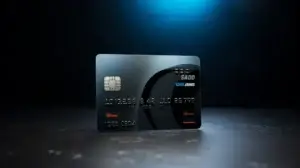Introduction
Boost conversions with the takeaway sales strategy. This technique creates urgency by temporarily removing an offer, prompting customers to act before they miss out. It leverages the psychology of scarcity and loss aversion to drive sales. If you’re looking to enhance your sales approach, boost conversions, and engage with customers in a way that resonates with their needs and desires, then you’ve come to the right place.
In this comprehensive guide, we’ll unravel its origins, dissect its core principles, and show you how to wield its power to maximize your business’s potential. Are you ready to take your sales game to the next level? Let’s dive in.
What is The Takeaway Sales Strategy?
The takeaway sales strategy is a sales technique that uses scarcity and value to boost conversions. It involves temporarily removing an offer to create urgency and push customers towards a decision. Key elements include limited-time offers, highlighting unique benefits, and using risk reversal tactics. This strategy can increase conversion rates, overcome objections, and improve negotiation leverage.
The takeaway sales strategy holds particular significance in modern sales and marketing for several reasons:
- Creating a Sense of Urgency: By temporarily removing an offer, customers are prompted to act quickly, fearing they might miss out on a valuable opportunity. This urgency can lead to faster decision-making and increased conversions.
- Highlighting Value: Takeaway selling often involves emphasizing the unique value proposition of a product or service. When customers realize what they stand to gain, they become more inclined to make a purchase.
- Overcoming Objections: The takeaway strategy can address objections or hesitations that customers may have. When they perceive the risk of losing out, objections often take a backseat to the desire to secure the offer.
Benefits of Takeaway Sales Strategy
So, why should you specifically consider incorporating the takeaway sales strategy into your approach? Let’s explore the compelling reasons behind its effectiveness and relevance.
The takeaway sales strategy offers a range of advantages and benefits that can make a significant difference in your sales efforts:
- Increased Conversion Rates: By creating a sense of urgency and highlighting value, the takeaway strategy often leads to higher conversion rates. Customers are more likely to commit when they perceive a limited-time opportunity.
- Enhanced Perceived Value: Takeaway selling emphasizes the unique features, benefits, and advantages of your product or service. This can elevate its perceived value in the eyes of your potential customers.
- Overcoming Stalls and Objections: When faced with objections or hesitations, the takeaway strategy allows you to address them effectively. The fear of losing out can overshadow other concerns.
- Improved Negotiation: In negotiation scenarios, the takeaway strategy can provide leverage. It encourages the other party to make concessions and compromises to secure the deal.
Key Elements of the Takeaway Sales Strategy
The takeaway sales strategy derives its power from a set of well-defined elements that, when strategically combined, create a compelling sales approach. In this section, we’ll break down these key elements and explain how they work together to drive successful sales outcomes.
1. Scarcity
At the heart of the takeaway sales strategy lies the principle of scarcity. Scarcity involves making an offer or opportunity seem limited or exclusive in some way. The idea is to create a sense of urgency and desirability that compels potential customers to take action. Here’s how scarcity is typically applied:
Limited Time Offers: Promotions with set expiration dates create urgency. Customers are more likely to act quickly when they know they have a limited window of opportunity.
Limited Quantity: Emphasizing that there are only a few items or slots available can trigger the fear of missing out (FOMO). This encourages swift decision-making.
Exclusive Access: Offering something unique or exclusive to a select group of customers can generate demand. People often want to be part of an exclusive club or experience.
2. Value Proposition
An essential aspect of the takeaway strategy is highlighting the unique value proposition of your product or service. You need to clearly communicate why your offering is superior to alternatives. This can involve:
Emphasizing Benefits: Explain how your product or service solves a specific problem or meets a need better than others. What are the tangible benefits?
Demonstrating Value: Use data, testimonials, or demonstrations to show the real value customers will gain. This helps justify the price or commitment.
Personalization: Tailor your value proposition to address the specific pain points or desires of individual customers. Make them feel that your offering is designed just for them.
3. Risk Reversal
Customers often hesitate to make a purchase due to perceived risk. The takeaway strategy addresses this concern by offering a form of risk reversal. This involves:
Money-Back Guarantees: Assure customers that they can get their money back if they’re not satisfied with the purchase. This reduces the perceived financial risk.
Free Trials or Samples: Allowing customers to try your product or service before committing to a purchase can build trust and reduce uncertainty.
Testimonials and Social Proof: Showcase positive reviews and experiences from other customers. This reassures potential buyers that they’re making a safe choice.
4. Closing Techniques
The takeaway sales strategy often relies on specific closing techniques to prompt customers to take action:
Trial Closes: Throughout the sales process, use trial closes to gauge the customer’s readiness to commit. For example, ask questions like, “If I can address your concerns, would you be ready to make a decision today?”
Assumptive Closes: Assume that the customer is ready to buy and frame the conversation accordingly. For instance, say, “Great, let’s go ahead and get started.”
Alternative Choice Closes: Present the customer with a choice between two positive options. For example, “Would you prefer the standard package, or are you interested in the premium package with additional benefits?”
5. Emotional Connection
Lastly, creating an emotional connection with the customer is a crucial element of the takeaway strategy. People often make purchasing decisions based on emotions and then rationalize them with logic. To build this connection:
Active Listening: Pay attention to the customer’s concerns, desires, and emotions. Acknowledge and validate their feelings.
Storytelling: Share stories or examples that resonate with the customer’s situation. Stories create empathy and help customers see themselves benefiting from your product or service.
Empathy and Understanding: Show genuine empathy for the customer’s needs and challenges. Demonstrating that you understand their perspective builds trust.
By incorporating these key elements into your sales approach, you can effectively implement the takeaway sales strategy.
How to Implement the Takeaway Sales Strategy
Now that we’ve explored the key elements that make up the takeaway sales strategy, let’s delve into the practical steps to effectively implement this strategy in your sales process. By following these guidelines, you’ll be better equipped to harness the power of the takeaway strategy to drive sales and conversions.
1. Understand Your Audience
Before implementing any sales strategy, it’s crucial to have a deep understanding of your target audience. This includes knowing their needs, pain points, motivations, and buying behavior. Conduct thorough market research and customer profiling to gather valuable insights.
2. Identify Your Unique Value Proposition
As highlighted in the previous section, your unique value proposition is at the core of the takeaway strategy. Define what sets your product or service apart from the competition. What problems does it solve? How does it benefit your customers? Be ready to articulate this clearly and persuasively.
3. Create Scarcity and Urgency
One of the primary tactics in the takeaway strategy is the creation of scarcity and urgency. Here’s how to do it effectively:
Limited-Time Offers: Set specific timeframes for your promotions or discounts. Use countdowns or deadlines to emphasize the limited availability of the offer.
Limited Quantity: If applicable, communicate that there are only a limited number of items or spots available. Update your customers on the decreasing availability.
Exclusive Access: Offer exclusive benefits to a select group of customers, such as early access to a new product or premium features.
4. Tailor Your Approach
The takeaway strategy is not one-size-fits-all. Adapt your approach to the unique needs and preferences of your customers. Some may respond better to emotional appeals, while others may prioritize logical arguments. Be prepared to switch tactics based on individual interactions.
5. Address Objections Effectively
In the sales process, objections are common. However, with the takeaway strategy, objections can be opportunities. When a customer raises concerns, use them as a chance to showcase the value of your offering. Address objections confidently and provide solutions.
6. Use Closing Techniques
Employ the closing techniques discussed earlier, such as trial closes, assumptive closes, and alternative choice closes. These techniques can guide the conversation toward a decision point. Remember that timing is crucial; use these techniques when you sense the customer is ready to commit.
Common Mistakes to Avoid with Takeaway Sales Strategy
Incorporating the takeaway sales strategy into your sales approach can yield impressive results, but it’s essential to navigate this technique carefully to ensure its effectiveness and maintain a positive customer experience. Here are common pitfalls to steer clear of:
One of the primary pitfalls is overusing scarcity tactics. While creating a sense of urgency is a key element, excessive pressure from constant deadlines and limited offers can erode trust. It’s crucial to strike a balance between urgency and authenticity. Clarity is equally vital. Ambiguity in your offers and communications can confuse customers and undermine your credibility. Ensure that your messaging is transparent and straightforward.
Moreover, emphasizing value is at the core of the takeaway strategy. However, failing to deliver on the promised value can lead to customer dissatisfaction and harm your reputation. Always ensure that your product or service lives up to expectations. Don’t overlook customer needs and preferences; the strategy should align with their desires, not pressure them into unnecessary purchases.
By steering clear of these common mistakes and ensuring a balanced approach, you can maximize the benefits of the takeaway sales strategy while maintaining a positive customer experience and fostering lasting customer relationships. In the next section, we’ll explore how to measure the success of your takeaway sales strategy and track its impact on your business.
In Conclusion
The takeaway sales strategy is a dynamic tool for driving action by instilling a sense of urgency. It’s essential to grasp your audience’s needs and present your product’s value clearly. Address objections and personalize your approach for each customer, all while using tactics like limited-time offers. Remember to stay vigilant against common pitfalls such as overusing scarcity and ensuring clarity in your messaging. Striking a balance with other sales strategies is crucial for a well-rounded approach. With consistent effort and adaptation, you can boost sales, provide value to customers, and propel your business forward.
So, if you’re ready to put this strategy into action, focus on understanding your audience, honing your persuasive skills, and always keeping an eye on results. Your journey to sales success begins with mastering the takeaway strategy and adapting it to your unique business needs.




